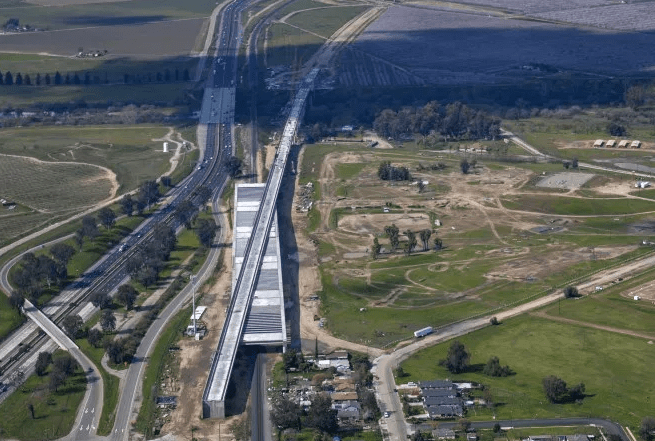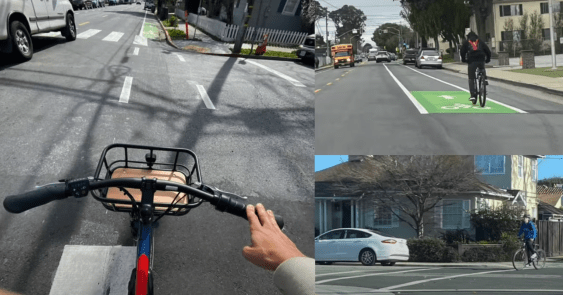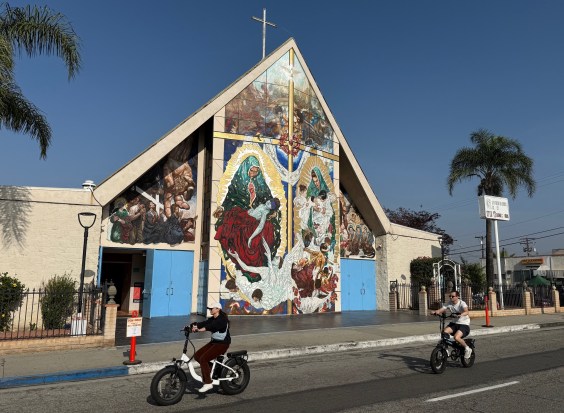Note: GJEL Accident Attorneys regularly sponsors coverage on Streetsblog San Francisco and Streetsblog California. Unless noted in the story, GJEL Accident Attorneys is not consulted for the content or editorial direction of the sponsored content.
Sometimes it's hard to tell if opponents of the state's rail modernization efforts are serious.
Take a recent editorial from the Orange County Register, seemingly based on an understanding of rail construction derived from watching the AMC series, Hell on Wheels, and its depiction of how the transcontinental railroad was built in the 1800s. The gist of the editorial is that we should lay the tracks from one end and keep building forward, instead of building in multiple locations at once, as is currently the plan.
From the Register:
The California High Speed Rail Authority has a new plan to complete the necessary construction for 119 miles of track in the Central Valley by 2022, as required by federal grant agreements. They’re going to build the track in non-continuous 5-mile segments. Just when you thought nothing could be more ridiculous than the plan to run the bullet train between San Jose and an orchard near Wasco, the rail authority announces a plan to build segments of track that don’t connect to each other.
First of all, nobody is talking about building a bullet train that only operates between San Jose and Wasco. And this isn't 1862, as depicted in AMC's drama, where track crews set up a camp at the end of the rail line and built forward, essentially engineering the next section as they go, excavating with pick axes and dynamite.
This project is taking so long and costing so much because of a funding system that makes every project a pawn of conflicting political interests (most recently, HSR has become a victim of Governor Gavin Newsom's feud with President Trump which is causing the Federal Administration to try to claw back funding). Trains magazine did a hilarious sendup of what would happen if the U.S. tried to build the transcontinental railroad today (for one, they reckon it would take 57 years, given modern politics).
But if one could magically eliminate the politics, physically laying train tracks with modern equipment is actually a fast process. That's why the Chinese managed to build enough miles of high-speed rail in the past thirty years to link all the major urban areas of the U.S. The hardest part is building the bridges and grade separations--and obtaining and clearing the right-of-way for the tracks.
And that's what the state of California has been doing since the project broke ground in 2015.
Below is a screen shot of an interactive map showing where the California high-speed rail program is currently under construction. Every orange dot represents a construction site similar to that pictured in the lead image:
Once the bridges, trenches and viaducts are done, and the ROW is created, further construction--meaning laying tracks--is mostly automated.
Here's a track laying machine and crew in China:
"Laying track segment by segment as the civil works become available is the most efficient way to help us maximize our resources and meet our 2022 completion deadline," wrote an official with the High Speed Rail Authority, in an email to Streetsblog. "Track segments will vary from as few as one mile to as many as nine miles, with average segments being about 5-6 miles long."
Following the OC Register's editorial prescription, on the other hand, would be the equivalent of finishing the basement of a building, including painting the walls and adding carpet, before building the framing for the next level, and then proceeding like that floor by floor.
That, of course, would cost more and take much longer. And the suggestion to only have one crew building in one direction only goes to show the members of the OC Register's libertarian editorial board are vociferously and confidently opposing a project they don't actually know anything about.
Here's a video from CAHSRA showing construction going on up and down the state.






